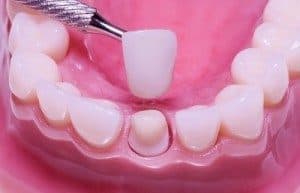
With crowns, veneers, inlays, onlays and dental bonding treatments available, the world of cosmetic dentistry has become a smorgasbord of dental procedures which can be very confusing for a patient. So if you were thinking about giving your teeth that most needed makeover, when should you opt for a certain treatment?
Veneers
Porcelain veneers in Sacramento are also known as dental laminates. They are thin shells of porcelain which are pasted on the front portions of teeth. Veneers are perfect for individuals who have problems with the appearance of their teeth but the biting surfaces of their teeth are intact. Some of the dental conditions which could be addressed with dental veneers include chips, cracks and huge cavities which have to be filled but are still rather conspicuous.
If you’re thinking of getting dental veneers, don’t think that your teeth can be remedied right away. It takes two visits to the dentist before your veneers can be bonded into place and chances are that the visits are spaced far in between.
Crowns
Sacramento dental crowns are also known as caps and are fitted over the tooth. Unlike veneers, crowns encapsulate the entire tooth so that the crown substitutes the enamel of the tooth that is to be treated. While crowns can also help to conceal dental imperfections, they are best called for when the tooth has already become worn down and the biting surface has already become damaged.
Just with porcelain veneers, porcelain crowns require a number of weeks before they can be completed and bonded to the tooth. For that reason, you may want to schedule your dental appointment way ahead of time before any event which requires your beautiful smile.
Inlays and Onlays
These dental restorations are used on the biting surfaces of your teeth. An inlay is one which covers one of the pointed structures found in the biting surface of your tooth, also known as the cusp. On the other hand, onlays are used on the entire biting surface of a tooth. Onlays are larger than the inlays. You can opt for inlays and onlays when the rest of the dental structure is alright but it’s just the biting surface which has become worn down. You can also make use of inlays and onlays when there are large cavities which have developed on the biting surfaces of teeth, which have threatened the overall stability and integrity of the dental structures.
Image Courtesy Pinterest
